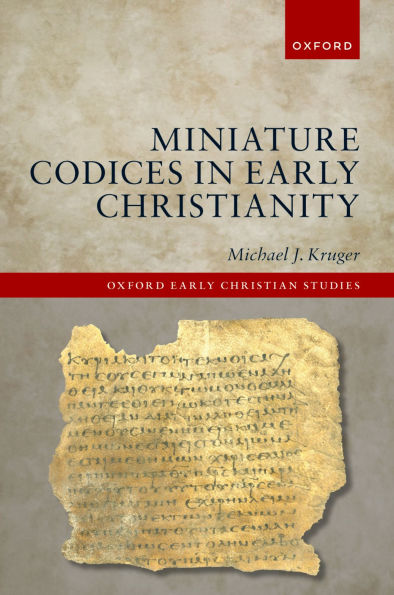While there has been renewed scholarly interest in paratextual features of early Christian manuscripts, that interest has rarely extended to the size of manuscripts, particularly the format known as the miniature codex. Such neglect is surprising given that this miniature format was a notable part of early Christian textual culture, emerging as early as the second century and visible well into the seventh century and beyond. So established was this format among Christians during this period, that C.H. Roberts once surmised (incorrectly) that, "The miniature codex would seem to be a Christian invention." Many of these tiny books were elegant, well-crafted, and could contain a surprising number of pages. Currently, we have over 60 such codices, which contain a wide range of Christian literature including New Testament books, patristic and non-canonical writings (e.g., the Didache, Acts of Paul, and apocryphal gospels), and even liturgical-ritual texts. This volume is the first full-length monograph on the phenomenon of the miniature codex, offering a framework for distinguishing miniature codices from other tiny texts (e.g. amulets), exploring their practical and iconic functions, and, perhaps most importantly, assembling a detailed catalogue of all known Christian and Greek miniature codices. This distinctive book format provides an essential window into the textual, literary, and visual culture of early Christianity, shedding fresh light on how and why Christians were considered people of the book.
1146718949
Miniature Codices in Early Christianity
While there has been renewed scholarly interest in paratextual features of early Christian manuscripts, that interest has rarely extended to the size of manuscripts, particularly the format known as the miniature codex. Such neglect is surprising given that this miniature format was a notable part of early Christian textual culture, emerging as early as the second century and visible well into the seventh century and beyond. So established was this format among Christians during this period, that C.H. Roberts once surmised (incorrectly) that, "The miniature codex would seem to be a Christian invention." Many of these tiny books were elegant, well-crafted, and could contain a surprising number of pages. Currently, we have over 60 such codices, which contain a wide range of Christian literature including New Testament books, patristic and non-canonical writings (e.g., the Didache, Acts of Paul, and apocryphal gospels), and even liturgical-ritual texts. This volume is the first full-length monograph on the phenomenon of the miniature codex, offering a framework for distinguishing miniature codices from other tiny texts (e.g. amulets), exploring their practical and iconic functions, and, perhaps most importantly, assembling a detailed catalogue of all known Christian and Greek miniature codices. This distinctive book format provides an essential window into the textual, literary, and visual culture of early Christianity, shedding fresh light on how and why Christians were considered people of the book.
109.99
In Stock
5
1

Miniature Codices in Early Christianity
240
Miniature Codices in Early Christianity
240Related collections and offers
109.99
In Stock

Product Details
| ISBN-13: | 9780198940401 |
|---|---|
| Publisher: | OUP Oxford |
| Publication date: | 06/07/2025 |
| Series: | Oxford Early Christian Studies |
| Sold by: | Barnes & Noble |
| Format: | eBook |
| Pages: | 240 |
| File size: | 6 MB |
About the Author
From the B&N Reads Blog
